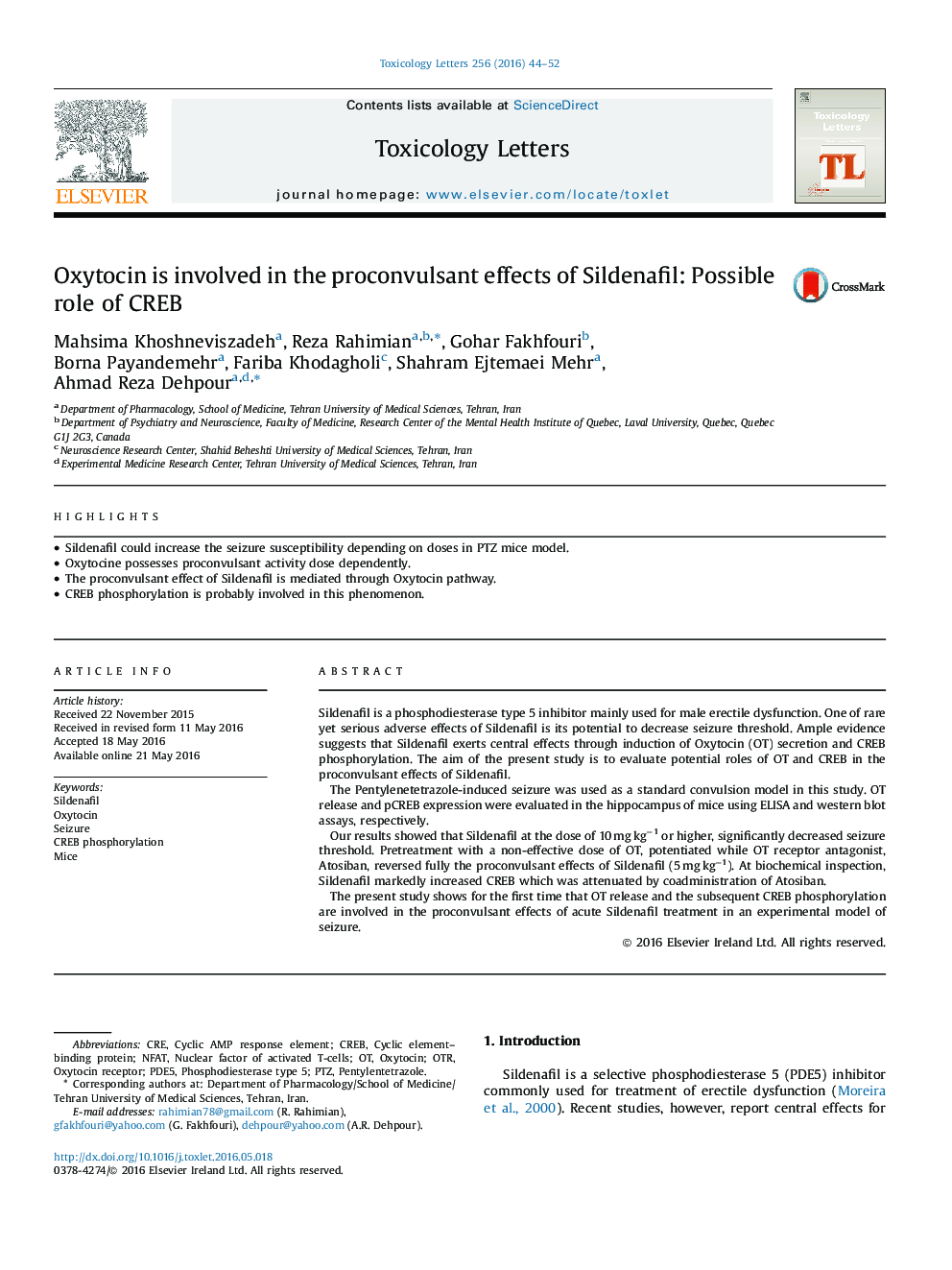| Article ID | Journal | Published Year | Pages | File Type |
|---|---|---|---|---|
| 2598359 | Toxicology Letters | 2016 | 9 Pages |
•Sildenafil could increase the seizure susceptibility depending on doses in PTZ mice model.•Oxytocine possesses proconvulsant activity dose dependently.•The proconvulsant effect of Sildenafil is mediated through Oxytocin pathway.•CREB phosphorylation is probably involved in this phenomenon.
Sildenafil is a phosphodiesterase type 5 inhibitor mainly used for male erectile dysfunction. One of rare yet serious adverse effects of Sildenafil is its potential to decrease seizure threshold. Ample evidence suggests that Sildenafil exerts central effects through induction of Oxytocin (OT) secretion and CREB phosphorylation. The aim of the present study is to evaluate potential roles of OT and CREB in the proconvulsant effects of Sildenafil.The Pentylenetetrazole-induced seizure was used as a standard convulsion model in this study. OT release and pCREB expression were evaluated in the hippocampus of mice using ELISA and western blot assays, respectively.Our results showed that Sildenafil at the dose of 10 mg kg−1 or higher, significantly decreased seizure threshold. Pretreatment with a non-effective dose of OT, potentiated while OT receptor antagonist, Atosiban, reversed fully the proconvulsant effects of Sildenafil (5 mg kg−1). At biochemical inspection, Sildenafil markedly increased CREB which was attenuated by coadministration of Atosiban.The present study shows for the first time that OT release and the subsequent CREB phosphorylation are involved in the proconvulsant effects of acute Sildenafil treatment in an experimental model of seizure.
